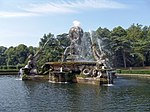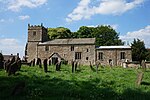Castle Howard
Arboreta in EnglandCountry houses in North YorkshireEnglish Baroque architectureEnglish gardens in English Landscape Garden styleGardens in North Yorkshire ... and 11 more
Grade I listed buildings in North YorkshireGrade I listed housesHistoric house museums in North YorkshireHouses completed in 1712Howard family (English aristocracy)John Vanbrugh buildingsMuseums in North YorkshireNicholas Hawksmoor buildingsStructures on the Heritage at Risk registerUse British English from December 2019Woodland gardens

Castle Howard is a stately home in North Yorkshire, England, within the civil parish of Henderskelfe, located 15 miles (24 km) north of York. It is a private residence and has been the home of the Carlisle branch of the Howard family for more than 300 years. Castle Howard is not a fortified structure, but the term "castle" is sometimes used in the name of an English country house that was built on the site of a former castle. The house is familiar to television and film audiences as the fictional "Brideshead", both in Granada Television's 1981 adaptation of Evelyn Waugh's Brideshead Revisited and in a two-hour 2008 adaptation for cinema.
Excerpt from the Wikipedia article Castle Howard (License: CC BY-SA 3.0, Authors, Images).Castle Howard
Mans Lane, York Henderskelfe
Geographical coordinates (GPS) Address Website External links Nearby Places Show on map
Geographical coordinates (GPS)
| Latitude | Longitude |
|---|---|
| N 54.121388888889 ° | E -0.90583333333333 ° |
Address
Castle Howard
Mans Lane
YO60 7DA York, Henderskelfe
England, United Kingdom
Open on Google Maps










